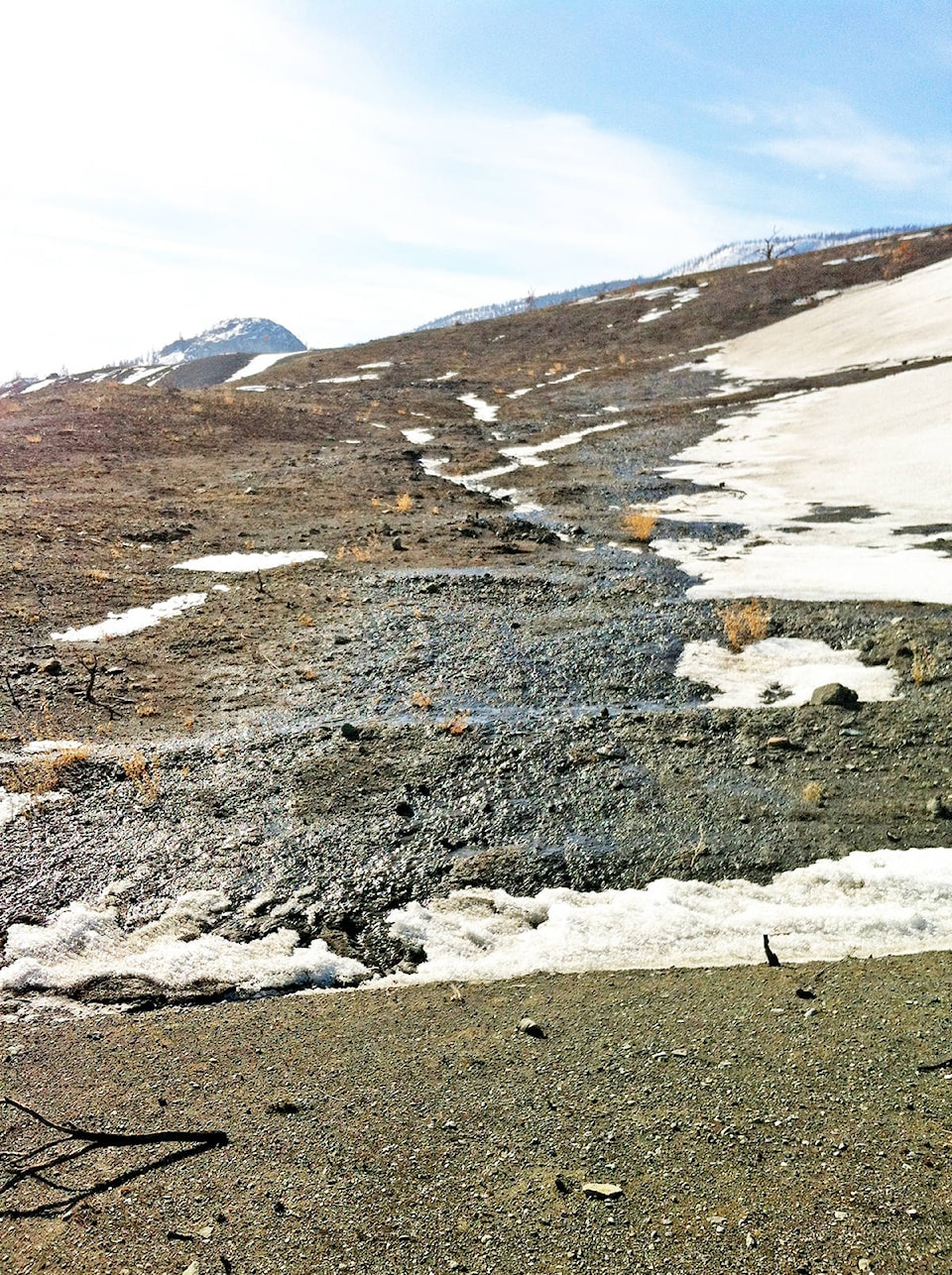The January 2018 report on the 2017 wildfires by Diane Nicholls and Tom Ethier had some interesting data on non-forest lands as well as the forested areas.
“The 2017 wildfires affected one million hectares of forest, nearly two per cent of the forested area of the province (55 million hectares).
“The remaining 200,000 hectares affected by wildfire was non-forested; mostly grasslands.”
Probably the majority of the burned grasslands were in the Cache Creek and Ashcroft area burned in the Elephant Hill fire.
For those who have driven through this area there are obvious shrub and grassland areas that were burned resulting in the complete loss of the sage brush and rabbit brush in the most severely burn areas.
Depending on how soon the shrubs recover and if the rains come at the right time there should be a increase in the grass/forb communities with less competition from the shrubs.
In the long term there should be a benefit to the ranchers who graze cattle on these areas.
It remains to be seen just how much extra forage will be produced depending on climatic conditions and how much the fires impacted the soils and roots of the grasses and forbs.
Another factor noted in the report is the extent of the impact of the fires on the moisture holding capacity of the soils due to a phenomenon known as hydrophobic soils.
Burning of organic matter produces a waxy material that enters the soil as a gas and when it cools it hardens on soil particles which are less able to absorb water creating more runoff.
While this is mostly on hot burning high fuel forest lands I assume there may be some impact on the grass shrub areas.
Range managers on both private and Crown lands will be cautious this year and maybe next in grazing the newly sprouting grass and forb plants.
If the plants are grazed too soon and too severely the root reserves won’t have the chance to replenish and subsequent long-term growth could be severely reduced.
Any deferred grazing is just one more impact on the ranchers who may have already suffered loss of fall grazing, hay bales, fences and buildings as well as animals in some cases.
The late spring forced many to buy extra hay at elevated prices due to the high demand and secure new pastures.
Spring road bans were restricting the delivery of the expensive hay adding to the negative impacts.
Once the plants have replenished root reserves and stopped growing in the fall of 2018 these deferred pastures could be used. Ranchers need some form of assistance that will allow them to minimize the use of these burned areas so we can all enjoy the benefits of healthy ranges and prosperous ranching communities.
The fires may have also created more pasture lands by reducing trees and shrubs in the forests adjacent to the grasslands.
This was particularly noticeable in Beachers Prairie near Riske Creek.
As noted above the extent of the increase will depend on the climate and ability of the ranchers to defer grazing so forage can increase in the long term.
In some cases it may be advantageous to seed these areas (especially fire guards) to desirable forage plants rather than giving the chance for weeds and less desirable plants to invade the areas.
The authors also discuss the effects on wildlife and biodiversity which are positive and negative depending on the species. “Species associated with the trees in closed forest canopies decline following crown fires, whereas those associated with open forest conditions and snags increase their populations. Species associated with early successional shrub and herb understories (e.g., ungulates) generally benefit following wildfire, whereas those associated with large woody debris may decrease until new, downed wood is recruited.”
Jim Hilton is a professional agrologist and forester who has lived and worked in the Cariboo Chilcotin for the past 40 years. Now retired, Hilton still volunteers his skills with local community forests organizations.
